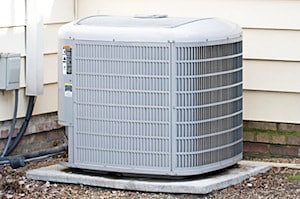Can a Heat Pump Replace My Air Conditioner and Furnace?

February 11, 2013
Yes. This seems too good to be true, but we assure you, it’s not.
In essence, a heat pump is an air conditioner that can also work in reverse to heat your home. So, it can effectively replace your air conditioner and furnace.
In this post you’ll learn exactly how a heat pump works.
Understanding the basic concept of heat pumps
Heat pumps work under one basic principle--heat transfer. So, a heat pump transfers or “pumps” heat from one place to another.
In other words, during the summer the heat pump pulls the heat from your home and transfers (or pumps) it outside. This makes your home feel cooler and is the same process air conditioners and refrigerators use.
During the winter, the heat pump reverses, taking the heat from outside and pumping it into your home.
Now that you’ve got the basics down, let’s explore the two functions of an air-source heat pump more in depth.
Keeping you warm or cool days
During the winter, a fan pulls outside air into the heat pump over the outdoor coils. These coils contain a liquid refrigerant, which absorbs the heat from the outside air. (Even during nights as cold as 40 degrees Fahrenheit, there is enough heat in the air to heat your home.)
As the refrigerant absorbs the heat, it turns into a vapor. The vapor then goes through a compressor to increase its pressure and temperature. The vapor flows to the inside coil (located inside your home.)
Another fan (called a blower) blows air over these indoor coils. As the air passes over the indoor coils, it absorbs the heat. The heated air is then blown through your air ducts, heating your home.
The refrigerant cools (because the heat was transferred to your home’s air) and returns to the outdoor coils where the cycle begins again.
Heat pumps are more efficient at heating your home than your furnace because they use electricity to move heat instead of creating heat. In fact, they can provide up to 3 times the amount of energy they use.
Keeping you cool on warm days
During the summer, your heat pump performs the same process as above, but in reverse. (It functions like a normal air conditioner.)
This is possible because heat pumps contain a reversing valve, which allows it to move heat both into and out of your home.
Working as an air conditioner, the refrigerant absorbs heat on the inside part of the unit and flows outside where it releases the heat.
Getting to know the pros and cons of different types of heat pumps
Besides air-source heat pumps there are also geothermal heat pumps. The main difference between the two is the medium they use to transfer heat.
You can learn more about the pros and cons of each of these types of heat pumps in our previous article, “What is a Heat Pump?”
Posted in: Buyer's Guide